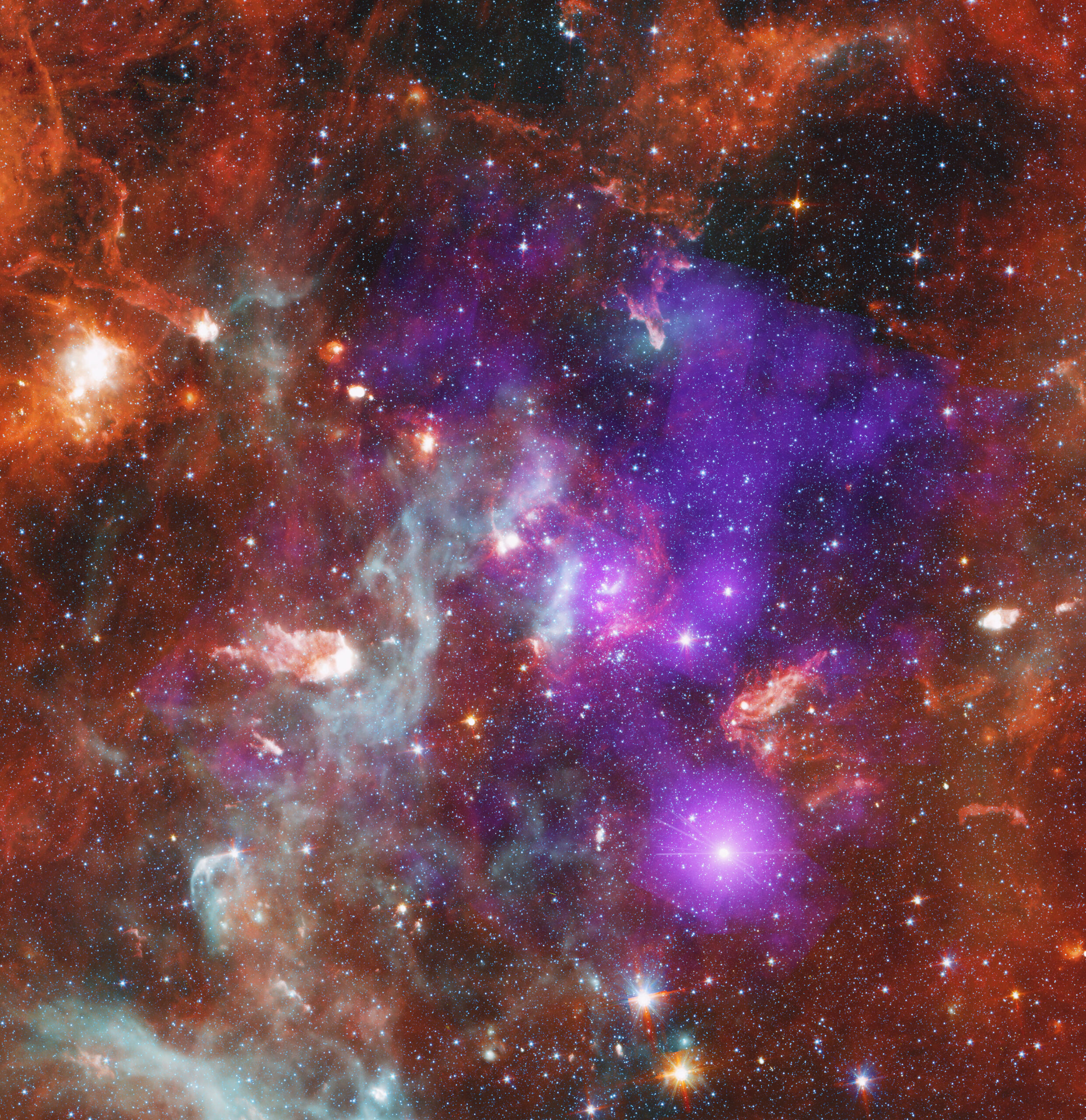In the vast expanse of the universe, stars often form in groups known as clusters or associations. These clusters can be home to some of the most massive stars, which emit significant amounts of high-energy radiation. This radiation plays a pivotal role in shaping the environment around these stars, particularly affecting the formation of new planets. Let’s delve into the fascinating findings from a team of astronomers who studied one such star cluster using NASA’s Chandra X-ray Observatory along with data from other wavelengths, including ultraviolet, optical, and infrared.
The primary focus of the research was on Cygnus OB2, a colossal star cluster located relatively close to our solar system, at a distance of about 4,600 light-years. This cluster is a bustling hub of activity, containing hundreds of massive stars and thousands of less massive stars. Through extensive observations using the Chandra X-ray Observatory, astronomers have painted a detailed picture of this cluster, revealing some intriguing insights about the formation—or hindrance—of planetary systems in such environments.
The process of star formation begins with clouds of gas and dust collapsing under their own gravity. These clouds eventually form disks around young stars, which are potential birthplaces for new planets. However, in star clusters like Cygnus OB2, the intense radiation from massive stars can disrupt these fragile disks. The Chandra Observatory’s deep observations have allowed scientists to map out the diffuse X-ray glow between the stars, providing a comprehensive inventory of the young stars within the cluster. This data, when combined with optical and infrared observations, offers the most detailed census of young stars in Cygnus OB2 to date.
The resulting composite image from these observations is a breathtaking sight. The Chandra data is depicted in purple, highlighting the diffuse X-ray emissions and young stars. Meanwhile, data from NASA’s now-retired Spitzer Space Telescope is shown in shades of red, green, blue, and cyan, indicating the cooler dust and gas spread throughout the region.
In the dynamic environment of Cygnus OB2, the high-energy radiation from stars has a profound impact. Both X-rays and intense ultraviolet light can severely affect the disks around young stars, accelerating their dissipation. Normally, these disks gradually fade over time, as some material falls onto the star while some is evaporated by radiation. This evaporation process, known as photoevaporation, typically takes between five and ten million years for average-sized stars. However, the presence of massive stars, which emit large amounts of radiation, can significantly speed up this process.
The research team uncovered compelling evidence that planet-forming disks around stars disappear much faster when they are near massive stars producing high-energy radiation. The closer the proximity to these massive stars, the quicker the disks vanish. In regions of Cygnus OB2 with lower levels of high-energy radiation and fewer stars, about 40% of young stars retain their disks. In contrast, in areas with more radiation and densely packed stars, only about 18% of young stars have disks. The most hazardous locations for prospective planetary systems are within approximately 1.6 light-years of the most massive stars in the cluster.
Additionally, a separate study conducted by the same team explored the characteristics of the diffuse X-ray emissions in the cluster. They discovered that the higher-energy emissions originate from regions where winds of gas, expelled from massive stars, collide with each other. This collision heats the gas, causing it to emit X-rays. Meanwhile, the less energetic emissions likely result from interactions between gas within the cluster and the surrounding gas.
These findings are detailed in two separate scientific papers. The first paper, which discusses the planetary danger zones, was led by Mario Giuseppe Guarcello from the National Institute for Astrophysics in Palermo, Italy. The second paper, focusing on the diffuse emissions, was headed by Juan Facundo Albacete-Colombo from the University of Rio Negro in Argentina. Both papers were published in the November 2023 issue of the Astrophysical Journal Supplement Series.
The management of the Chandra X-ray Observatory program is overseen by NASA’s Marshall Space Flight Center in Huntsville, Alabama. The Smithsonian Astrophysical Observatory’s Chandra X-ray Center handles the scientific operations from Cambridge, Massachusetts, while flight operations are managed from Burlington, Massachusetts. The Spitzer Space Telescope mission, which concluded in January 2020, was managed by NASA’s Jet Propulsion Laboratory (JPL) for the Science Mission Directorate in Washington. The mission’s scientific operations were carried out at the Spitzer Science Center at Caltech, with spacecraft operations based at Lockheed Martin Space in Littleton, Colorado. Data from the mission are archived at the Infrared Science Archive, operated by IPAC at Caltech.
For those interested in learning more about the Chandra X-ray Observatory and its mission, further information can be found on NASA’s website as well as the dedicated Chandra site.
The composite image of the Cygnus OB2 star cluster is a visual marvel, resembling a night sky filled with vibrant orange, purple, and grey clouds. At the heart of the image, a purple haze dominates, representing the diffuse X-ray emissions and young stars detected by the Chandra X-ray Observatory. Encircling this purple haze is a mottled, streaky, brick-orange cloud, alongside a grey smoke-like tendril stretching across the image. These clouds reflect the cooler dust and gas observed by the Spitzer Space Telescope.
Despite the interwoven clouds covering much of the image, the countless stars within the cluster shine through. The lower-mass stars appear as tiny specks of light, while the massive stars gleam brightly, some even displaying long refraction spikes.
The findings from this study underscore the complex interplay between radiation from massive stars and the potential for planet formation in star clusters. It highlights the challenges faced by nascent planetary systems in such environments, shedding light on the delicate balance required for planets to form and survive in the cosmos. This research not only enhances our understanding of star and planet formation but also provides a glimpse into the intricate dynamics at play in our universe.
For more Information, Refer to this article.



































